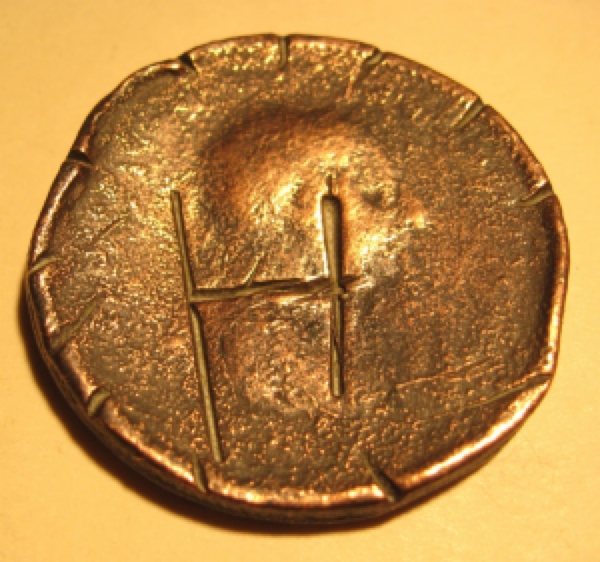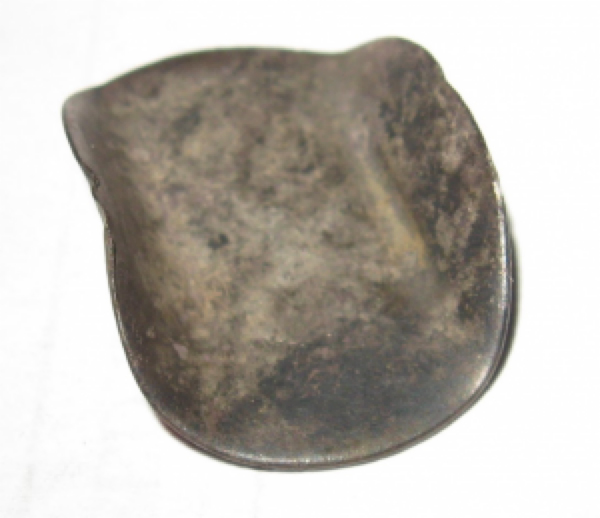When is a Coin not a Coin
When is a coin not a coin? By David Allsop
The answer to this question is when it’s a love token or indeed simply a decorated object. This month’s find is actually two finds, both found in the same field in Minting but which share a common pattern; they have both been changed into something else.
It is unclear exactly when or why the practice of altering coins (normally high denomination silver or occasionally gold coins), in order to show love, began. In the past we have found an Elizabeth I coin which has been bent into a Z shape but not in Minting or Gautby.
The first coin this month is a William III (King of England 1689-1702) sixpence. This was a very turbulent time in English History and William III was actually Dutch and was also known as William of Orange. The coin has been deliberately worn smooth on both sides and then bent into shape. Sometimes there is an inscription to the loved one but none is visible on this coin. It is identifiable from the size as well as very slight markings still left on the surface of the hammered coin. (See last month’s find for more information on hammered coins). The story goes that the coin would be offered by the man to his loved one. If she threw it away then he knew that she didn’t love him back but of course if it was kept then the love was true. Some say that the coin would be bent in front of the lady to show how strong the man was although as these coins are quite easy to bend I find this unlikely.
It is thought possible that the ‘crooked sixpence’ found near the ‘crooked style’ in the popular children’s nursery rhyme is a reference to these tokens.
We can only speculate whether this was deliberately thrown away by the lady for whom it was fashioned or whether it was a treasured item accidently lost and desperately searched for. It does give a lovely insight into the lives of those living in our villages.
The second coin has also been deliberately defaced but the motivation is less obvious. It is a George III halfpenny from quite late in his reign probably 1806 although the date is hard to read. Somebody has stamped a ‘H’ into the coin on the head side and also decorated the outside. Such low denomination coins are not normally love tokens but this could have been a poor Georgian living in the village or also possible a bored one. The engraving is also very crude and seems to be done without any care although to get such deep marks into the coin would have taken some effort. A third alternative, of course, is that this is a deliberate attempt to deface the face of the King, a serious and treasonable offence at the time but still a possibility.

